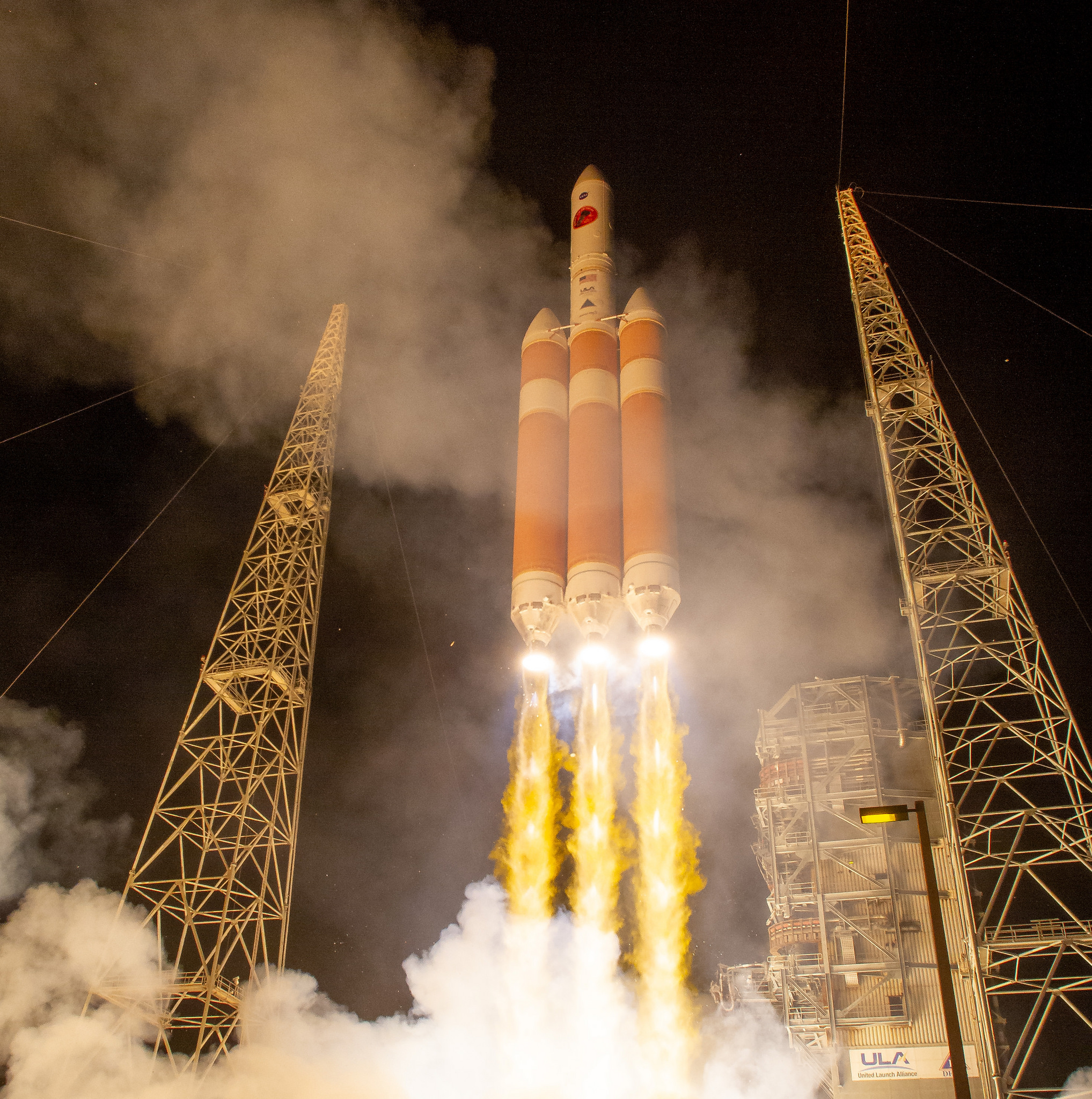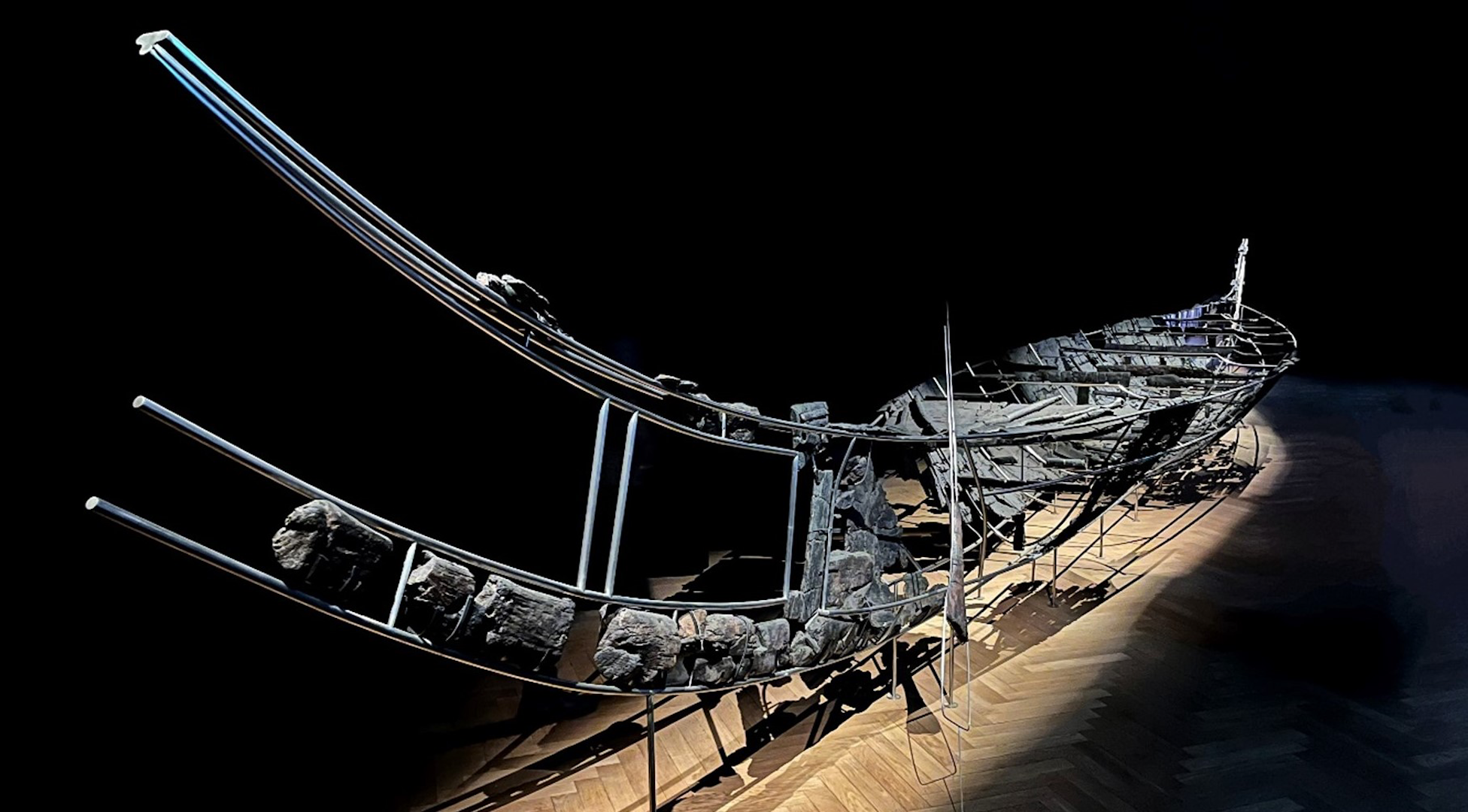Mars hung low over my shoulder, close and bright and fiery, as I stood on a causeway across the Banana River Sunday (Aug. 12) here at Cape Canaveral Air Force Station. A slight breeze kept the mosquitoes away, and Perseid meteors popped up every now and again, carving brief and slender slivers of light into the predawn sky.
And then, at 3:31 a.m. EDT (0731 GMT), that dark sky lit up in a flash of brilliant orange as a United Launch Alliance Delta IV Heavy rocket, one of the most powerful boosters flying today, lifted off the pad. [Launch Photos! NASA's Parker Solar Probe Blasts Off to Touch the Sun]
That flash was silent at first, like the view of a faraway nuclear blast. But about 30 seconds in, a wave of vibrations spawned by the rocket's massive engines washed over the causeway. Those vibrations drowned out the insect-like clicks of camera shutters and the frantic splashing of predator-evading Banana River fish in a monumental wall of noise.
NASA's $1.5 billion Parker Solar Probe mission was on its way into the heavens, in a whole lot of style.
"I'm in awe," Thomas Zurbuchen, the head of NASA's Science Mission Directorate, told reporters shortly after the successful liftoff. "It was a really clean launch."
There was one slight hiccup, however: The mission team lost telemetry about 40 minutes into flight, right around the time when the Parker Solar Probe was scheduled to separate from its rocket ride and start flying solo. But the connection was quickly re-established, eliciting raucous cheers from the folks in launch control (and from those of us at the press site at NASA's Kennedy Space Center, which is also here at Cape Canaveral).
If all goes according to plan, the Parker Solar Probe will fly through the sun's outer atmosphere, or corona, 24 times over the next seven years. The spacecraft will get within 3.83 million miles (6.16 million kilometers) of the solar surface, zooming through space at up to 430,000 mph (690,000 km/h) during these close flybys.
Get the world’s most fascinating discoveries delivered straight to your inbox.
Both of those figures will shatter spaceflight records: No other spacecraft has ever gotten closer to the sun than 27 million miles (43 million km) or traveled faster than 165,000 mph (265,000 km/h).
The data gathered by the Parker Solar Probe during these close encounters should help scientists solve some long-standing solar mysteries, NASA officials have said — for example, why the corona is so much hotter than the solar surface, and how the particles that make up the solar wind are accelerated to their tremendous speeds. (These subatomic bits are moving between 900,000 mph and 1.8 million mph, or 1.45 million and 2.9 million km/h, by the time they reach Earth.)
Those data will start arriving in early November, when the probe makes its first solar close approach. (However, an orbit-sculpting flyby of Venus in late September should yield interesting information about the second planet from the sun.)
That moment can't come soon enough for the mission's namesake, pioneering astrophysicist Eugene Parker, who predicted the existence of the solar wind back in 1958.
The 91-year-old Parker — a professor emeritus of astronomy and astrophysics at the University of Chicago, and the first living person to have a NASA mission named after him — came down to Cape Canaveral for Sunday's launch. Zurbuchen spoke with Parker shortly after liftoff.
Parker was deeply moved by the launch but "immediately switched to the next step, which is, 'I can't wait for the data — when are the data coming in?'" Zurbuchen said with a laugh. "It's like, 'OK, I'll send them to you, Gene. The moment we learn something new, I'll send it to you.' But it's going to be a while."
Follow Mike Wall on Twitter @michaeldwall and Google+. Follow us @Spacedotcom, Facebook or Google+. Originally published on Space.com.






